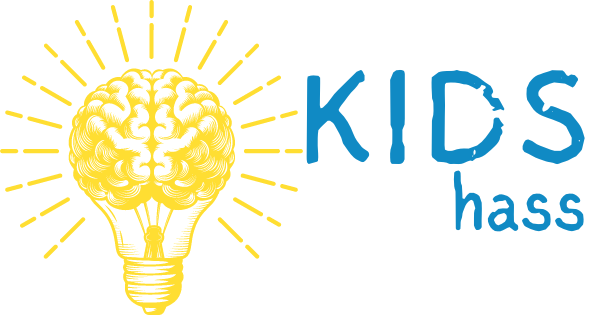In today’s rapidly evolving world, technology has become an integral part of parenting and education. Whether through mobile apps, interactive learning platforms, or virtual classrooms, parents and educators now have unprecedented access to resources that can support children’s development and learning. Empowering parenting and education through technology enables a more interactive and personalized approach to child-rearing, making both teaching and parenting more effective and engaging.
In this article, we’ll explore the role of technology in modern parenting and education, including key benefits, practical tools, and strategies for integrating technology to foster creativity and learning.
1. The Role of Technology in Modern Parenting and Education
Technology is transforming how parents raise their children and how educators teach. It’s no longer just about textbooks and lectures; the digital landscape offers innovative ways to enhance both teaching and parenting.
Parents and educators alike are leveraging technology to empower parenting and education through digital platforms, apps, and other tools. From tracking developmental milestones to creating personalized learning environments, technology has revolutionized traditional parenting and teaching approaches.
1.1. How Technology Empowers Parents
- Access to Information: Parents have instant access to a wealth of information. Whether it’s advice on managing tantrums or tools for tracking your child’s growth, online resources provide a lifeline of support for parents at every stage.
- Interactive Tools: Apps designed for early childhood development focus on essential skills such as literacy, numeracy, and critical thinking. These platforms use gamified learning to engage children while providing parents with insights into their child’s progress.
- Online Parenting Communities: Social media and forums allow parents to share advice, support, and experiences. Communities like these create a collaborative environment where parents can help each other overcome common challenges.
- Safety and Monitoring: Baby monitors, GPS trackers, and wearable devices help ensure the safety of children. These tools provide peace of mind and help parents stay connected to their children’s well-being.
1.2. How Technology Empowers Educators
- Innovative Teaching Tools: Educators now use smartboards, tablets, and projectors to deliver interactive lesson plans. Online platforms and apps like Kahoot or Google Classroom make it easier to adapt lessons to different learning styles.
- Virtual Classrooms and Remote Learning: The ability to teach remotely has expanded access to education. Virtual classrooms allow for flexibility in learning, ensuring that children can continue their education despite physical limitations or disruptions like the COVID-19 pandemic.
- Communication with Parents: Technology bridges the gap between educators and parents. Apps like ClassDojo allow teachers to send real-time updates on a child’s performance, fostering a collaborative approach to education.
1.3. The Importance of Balance in Technology Use
While technology offers remarkable benefits, it’s essential to balance digital engagement with traditional activities such as reading, outdoor play, and hands-on crafts. Ensuring that children don’t overly rely on digital devices helps create a well-rounded developmental experience.
2. Practical Tips for Fostering Creativity and Learning Through Technology
Empowering parenting and education through technology doesn’t just mean using apps and gadgets; it means leveraging these tools to foster creativity, critical thinking, and lifelong learning.
2.1. Use Educational Apps Wisely
Educational apps can be incredibly beneficial, but it’s essential to choose the right ones. Look for apps that:
- Encourage critical thinking and problem-solving skills.
- Offer personalized learning paths for children, such as ABCmouse or Khan Academy Kids.
- Focus on skill-building in areas such as math, reading, or science.
These apps offer a fun, interactive way for children to learn while allowing parents to monitor progress. Many platforms even provide progress reports to help parents stay informed about their child’s learning journey.
2.2. Incorporate Virtual Learning Platforms
Virtual learning platforms have transformed traditional education, offering opportunities for children to engage in group projects, workshops, and collaborative activities from anywhere. Platforms like Seesaw and Google Meet have made online learning interactive and social, allowing students to work together despite geographical barriers.
Parents can support their child’s virtual learning by creating a structured environment and setting aside dedicated time for online classes and projects. Scheduling group activities like coding clubs or writing workshops encourages teamwork and builds a sense of community among learners.
2.3. Interactive Games that Promote Learning
Games can play an important role in education when chosen carefully. Look for games that require decision-making and strategy, promoting collaboration and coordination. For example, apps like Minecraft Education Edition encourage children to solve complex problems and build creative solutions.
While interactive games are a fun way to learn, it’s crucial to balance screen time with physical and creative activities, ensuring children don’t become overly dependent on digital entertainment.
2.4. Enhancing Creativity with Digital Tools
Technology can be a powerful tool for encouraging creativity in children. Apps like Toca Boca and Scratch give children a platform to create their own stories, games, or even animations. These tools nurture problem-solving and artistic expression.
Encourage children to blend technology-based creativity with offline activities such as drawing, painting, or crafting. This mix of digital and hands-on experiences provides a holistic approach to learning and creativity.
3. Supporting Child Development Through Technology
In addition to fostering creativity, technology can support various aspects of child development. From language acquisition to emotional intelligence, digital tools have a positive impact on children’s growth.
3.1. Language Development
Apps like Duolingo or Endless Alphabet are designed to promote language learning in an interactive way. Children can learn new vocabulary, pronunciation, and grammar while enjoying the experience. These apps often use speech recognition technology to allow children to practice speaking and listening.
3.2. Emotional and Social Development
Mindfulness apps like Moshi or Calm Kids help children develop emotional intelligence by teaching them how to manage stress and emotions. These apps offer exercises and games designed to promote self-awareness and emotional regulation.
Games that encourage teamwork, such as Club Penguin or Animal Jam, allow children to interact with peers in a virtual environment, teaching them social skills and collaboration.
Conclusion
Technology has the power to transform modern parenting and education, offering tools that make learning more interactive and parenting more manageable. From educational apps and virtual classrooms to creative platforms and monitoring tools, technology empowers parents and educators to provide personalized, engaging experiences for children.
However, it’s essential to balance digital interaction with traditional activities, ensuring that children receive a well-rounded upbringing. By integrating technology thoughtfully, parents and educators can empower children to grow into confident, creative individuals prepared to face the challenges of the future.

